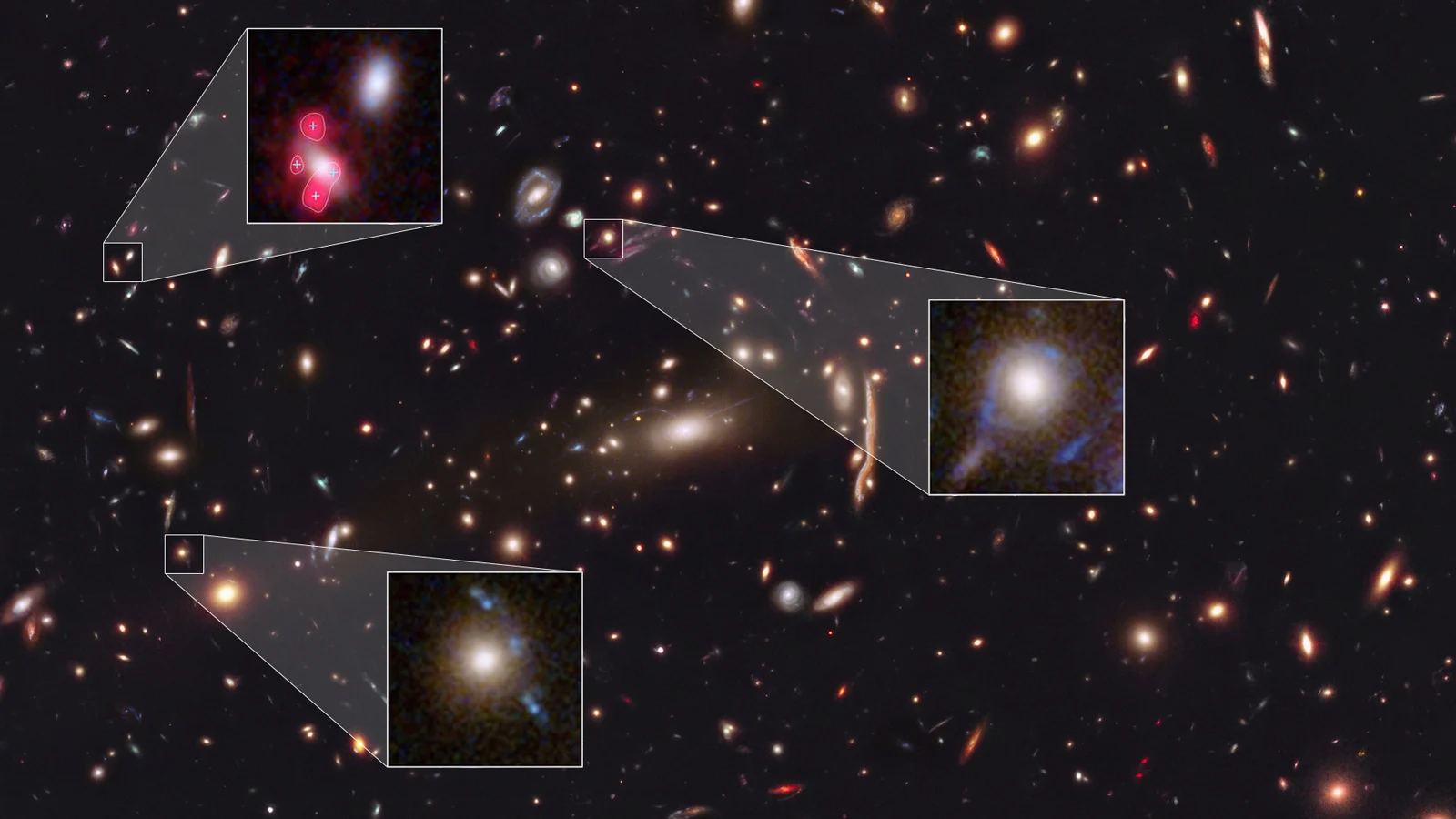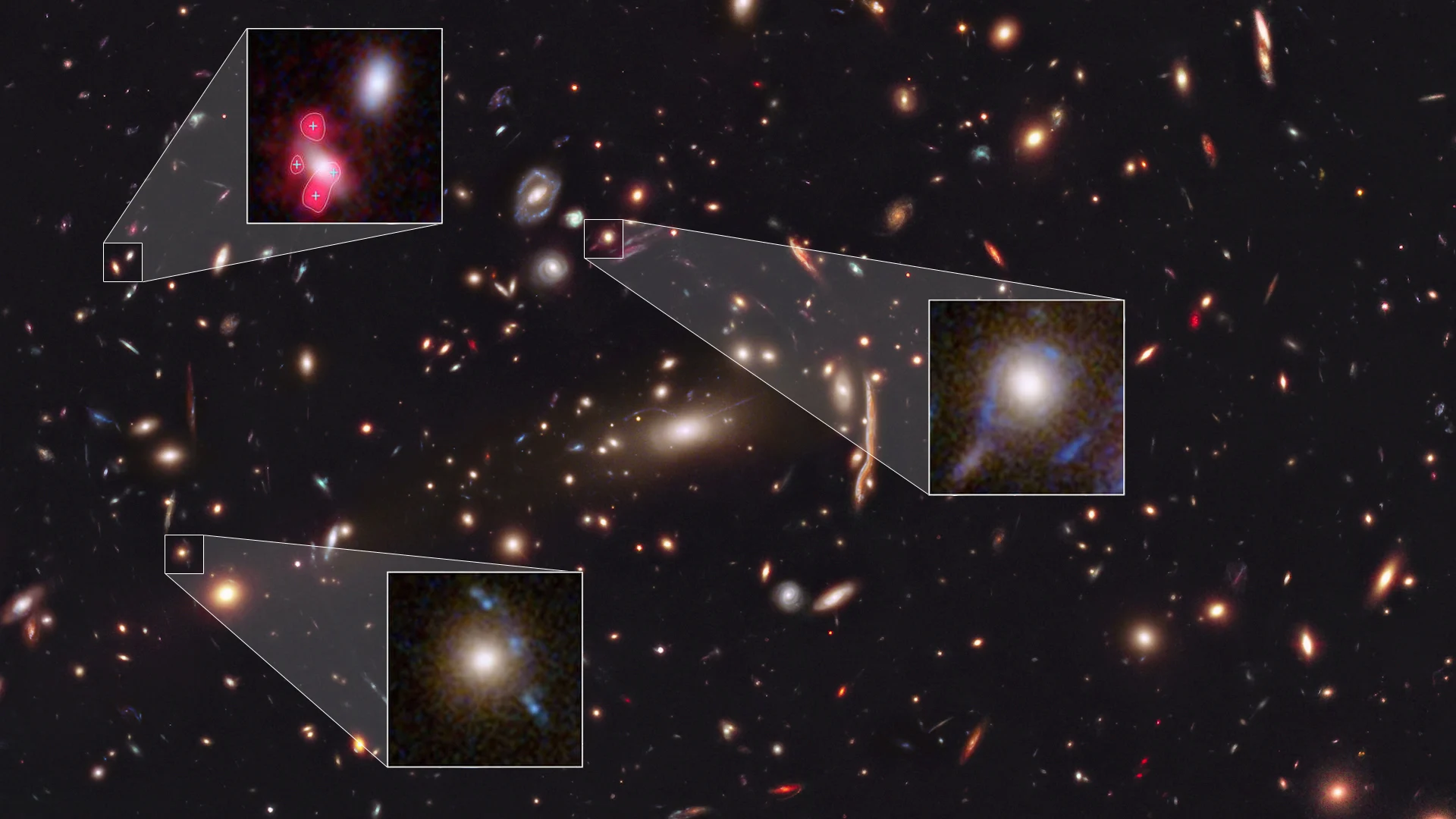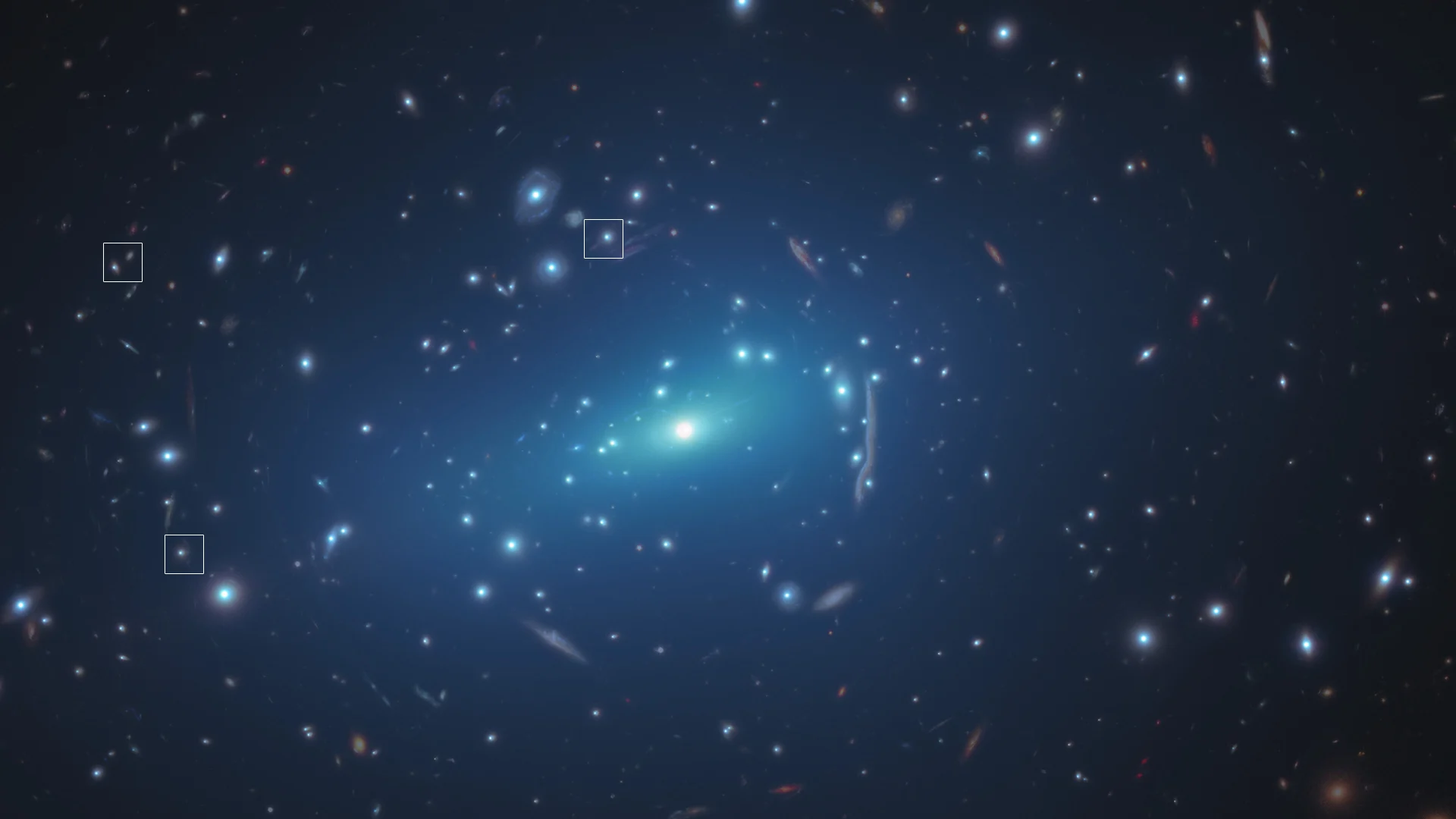
Astronomers discover a surprise twist in the mystery of dark matter
The universe just threw a new twist into the mystery of dark matter
The full nature of dark matter remains elusive, but new observations of a distant galaxy cluster have revealed that something is missing from even the fundamental theories astronomers use to map this invisible part of the universe.
When looking out into the depths of the cosmos, astronomers only see a small portion of what's really there. By examining how light behaves in the images they gather, they have a reasonably good idea of exactly how much matter is in the universe. However, even when they collect light from across the entire electromagnetic spectrum - from gamma rays to radio waves - they can still only account for about 15 per cent of that matter. The rest of the matter out there is invisible.
Although they cannot directly see this 'dark matter', astronomers can see its effects. They see how dark matter controls the rotation of galaxies, and they see how it binds galaxies together. They also see how dark matter's gravity bends the fabric of spacetime, producing so-called 'gravitational lenses'. Using these kinds of data, astronomers can build computer simulations to estimate dark matter concentrations in the universe. These simulations are then tested against what they see in more observations, to ensure they are correctly emulating reality.
"Galaxy clusters are ideal laboratories in which to study whether the numerical simulations of the Universe that are currently available reproduce well what we can infer from gravitational lensing," Massimo Meneghetti, a researcher at the Astronomical Observatory of Bologna and lead author of a new study, said in a Hubble press release.
Recently, Meneghetti led a team of astronomers to observe a massive galaxy cluster known as MACS J1206. Using the Hubble Space Telescope and the European Southern Observatory's Very Large Telescope (VLT), the team began mapping out all the ordinary matter and dark matter in the cluster. They noticed something strange.
Three of the individual galaxies in the cluster were producing unusually strong gravitational lenses. Each was 10 times stronger than it should be, based on how much dark matter the galaxies appeared to contain.
"We have done a lot of testing of the data in this study, and we are sure that this mismatch indicates that some physical ingredient is missing either from the simulations or from our understanding of the nature of dark matter," Meneghetti said in the press release.

Galaxy cluster MACS J1206, as viewed by the Hubble Space Telescope, is pictured here. The three inset images magnify three separate galaxies within the cluster, which appear to be producing gravitational lenses far stronger than they should be. Credit: NASA, ESA, P. Natarajan (Yale University), G. Caminha (University of Groningen), M. Meneghetti (INAF-Observatory of Astrophysics and Space Science of Bologna), and the CLASH-VLT/Zooming teams Acknowledgement: NASA, ESA, M. Postman (STScI), and the CLASH team
According to astronomers, there are two ways to estimate the amount and concentration of dark matter contained within an image like this.
The first is to plot out all the gravitational lenses that can be seen. The result is a map of the overarching lens surrounding the entire cluster, with numerous smaller lenses embedded into it from all the individual galaxies within the cluster. Each lens' size and strength will then tell you how much matter is there, and then you subtract away how much visible matter you see.
The second is to watch each individual galaxy, to see the motion of the stars within them. The rate that the stars rotate around the galaxy will also give you an idea of how much matter it contains. Again, subtracting away the visible matter will leave you with how much dark matter there is.
RELATED: NASA'S NEW COSMIC TREASURE TROVE REVEALS THE 'INVISIBLE' UNIVERSE
There's a problem in galaxy cluster MACS J1206, though.
For the three galaxies identified in the above image (and again below), the amount of dark matter indicated by their rotation does not account for the strength of their gravitational lens.

This image overlays dark matter distribution determined by a simulation based on data from the ESO's Very Large Telescope. The three anomalous galaxies are highlighted. Credit: NASA, ESA, G. Caminha (University of Groningen), M. Meneghetti (Observatory of Astrophysics and Space Science of Bologna), P. Natarajan (Yale University), the CLASH team, and M. Kornmesser (ESA/Hubble)
"There's a feature of the real Universe that we are simply not capturing in our current theoretical models," Priyamvada Natarajan, a member of the research team from Yale University, told SpaceTelescope.org.
"This could signal a gap in our current understanding of the nature of dark matter and its properties, as these exquisite data have permitted us to probe the detailed distribution of dark matter on the smallest scales," Natarajan added.
At the moment, there's no telling what the answer is to this new part of the dark matter mystery. Before astronomers can figure this one out, it's going to take new observations of galaxy clusters, to potentially find more of these discrepancies. When they do, it could lead to a deeper understanding of the nature of dark matter, and the universe.
Sources: NASA | Hubble Space Telescope










